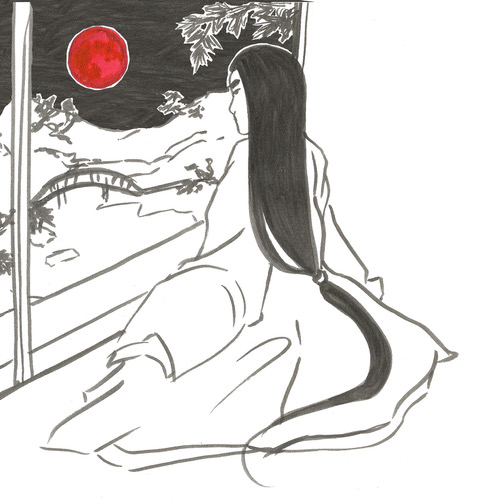Navigation auf uzh.ch
Navigation auf uzh.ch
 © Alexandra Ciorciaro 2019
© Alexandra Ciorciaro 2019
Prof. Dr. Simone Müller
This research project investigates morphologies of time and time regimes at the medieval court. The court had emerged as a primary sphere of vernacular literature in the Heian period (794-1185) and witnessed drastic changes with the dawn of the medieval period as political power shifted to the warrior class. With the establishment of the shogunate, the so-called bakufu, Japanese society gradually changed into a feudal and patrilocal system. The investigation into symbolic representation and social regulations of time in this period of drastic change will help to understand the interrelation between power structures and time symbolisations at the medieval court.
The main focus is on time perception of court ladies and courtiers and its relation to social activities and natural rhythms. This includes, for example, an investigation into the practices of announcing time and regulations of time use, as well as the expression of temporal aspects in literature. I notably probe into domain-specific modalities of time, such as: which actions and events had to be timely coordinated? Why and in what context was it important to discuss certain aspects of time?
Moreover, the project examines to what extent earlier practices of chronography and expressions of time consciousness at the court were continued into the medieval period and how these expressions changed over time. In medieval Japan, the court continued to be a locus of hidden and conspicuous excesses in strongly gendered exchanges, as well as an exemplary space of prolonged periods of idleness. Expressions of ennui, melancholia and nostalgia stand notably prominent in female court literature. There is, however, a tendency over time to give more room to record economic and legal matters. Therefore, the literature of early medieval Japan shows less preoccupation with economic time issues than that from late medieval Japan. This gives witness to a shift of the dominance of symbolic forms in the lives of courtiers in the Kamakura period (1185-1333) from “art” (a sphere rather connected to “aesthetic time”) to “economics” and “law” (spheres connected to “system time”).